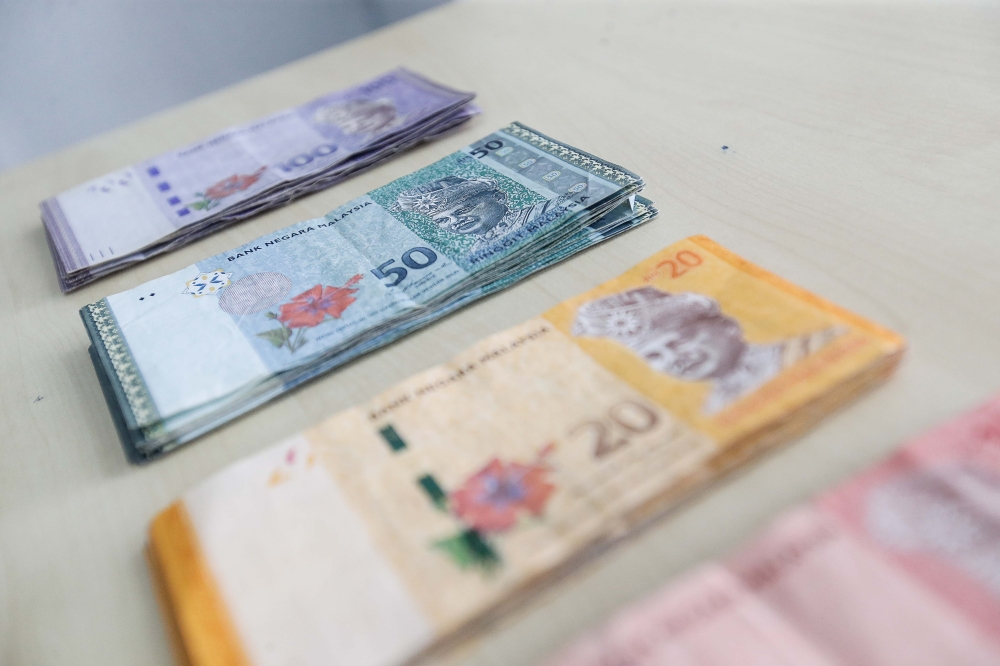NEW YORK, April 2 — Government bond yields resumed their upward climb yesterday as a key part of the US Treasury yield curve inverted once more on signs of persistent inflation, while falling oil prices ended the week with their sharpest weekly drop in two years.
US data released yesterday showed employers added 431,000 jobs in March and the unemployment rate fell to 3.6 per cent, continuing a strong run of hiring that has left key aspects of the American labour market “little different” from where they were before the Covid-19 pandemic.
With US economic growth so robust and inflation running at three times the Federal Reserve’s 2 per cent target, investors are widely expecting a drum roll of interest rate rises this year.
Treasury yields, which retreated earlier in the week as portfolio adjustments boosted demand for bonds, spiked again yesterday, causing a closely watched part of the yield curve to invert for the third time this week.
An inversion of the yield curve, when shorter-dated yields rise above longer-dated ones, is seen as a harbinger of a recession in the next one or two years.
“Today’s solid growth of payrolls checked the box for the Fed in its drive toward fighting inflation,” said Rick Rieder, BlackRock’s chief investment officer of global fixed income.
“Consequently, the Fed looks clearly undeterred in reaching at least policy neutrality and probably will do at least one and maybe two 50-basis-point rate hikes by the June ... meeting, which could even include an inter-meeting hike.”
Bets that aggressive monetary tightening could be in the cards did not drag equity markets lower yesterday.
US stocks finished higher after a choppy session. The Dow Jones Industrial Average rose 0.4 per cent, the S&P 500 added 0.34 per cent and the Nasdaq Composite gained 0.29 per cent.
The pan-European STOXX 600 index climbed 0.54 per cent and MSCI’s gauge of stocks across the globe rose 0.16 per cent.
Inflation in Europe is also running at record levels, with euro zone inflation hitting 7.5 per cent in March, data showed yesterday, another all-time high with months left before it is set to peak, raising pressure on the European Central Bank to act to contain prices even as growth slows sharply.
In response, the German 10-year government bond yield, a benchmark for the euro zone, rose 2.8 bps to 0.58 per cent, after jumping 39 bps in March, its biggest monthly rise since 2009.
“Government bond yields have moved up markedly in recent weeks and can be expected to trend higher over time due to inflationary pressures that are here to stay and responses by the main central banks,” Christian Nolting, global chief investment officer at Deutsche Bank Private Bank said in a note.
Two-year Treasury yields jumped to 2.4503 per cent from 2.284 per cent, surpassing benchmark 10-year US Treasury yields, which also rose to 2.3767 per cent from 2.325 per cent.
“Given its impressive track record in predicting US recessions — it’s been almost 50 years since the last false positive — it would seem foolish to doubt that bearish recession speculation,” said Paul Ashworth, chief North America economist at Capital Economics.
“Historically, however, the 10-year three-month (Treasury yield) spread has done a better job of signalling downturns than the 10-year two-year spread and the former is still close to 200 basis points,” Ashworth added.
In Tokyo, the was down 0.56 per cent, registering a 1.7 per cent weekly fall.
Supply disruption and surging raw material costs drove Japanese business confidence to a nine-month low last quarter.
Chinese blue chips rose 1.27 per cent, helped by hopes for policy easing. .HK
Oil dipped in and out of negative territory ahead of a meeting of International Energy Agency member nations set to discuss a release of emergency oil reserves alongside a huge planned release by the United States.
US crude fell 0.95 per cent to US$99.33 (RM418.23) per barrel and Brent was at US$104.38, down 0.32 per cent on the day.
For the week, Brent has dropped 13.5 per cent, the sharpest fall in almost two years, after an earlier surge driven by Russia’s invasion of Ukraine had seen prices rise by more than 30 per cent.
The dollar has benefited from safe-haven flows and expectations of rising US rates. Against a basket of peers, the greenback was up 0.23 per cent at 98.546, and it was up 0.6 per cent against the yen at 122.49.
The euro EUR= was down slightly at US$1.1051.
Safe-haven gold fell 0.76 per cent after its biggest quarterly gain in two years. Spot gold XAU= was last quoted at US$1,923.73 per ounce. — Reuters






















